From the top of Teufelsberg, it’s hard to imagine that the hill is made of debris. During the Nazi era, the site housed the Military Technology College, but the building was vacated after the war, and 25 million cubic meters of debris, which reportedly came from the bombing of 400,000 homes in Berlin, were dumped there. Then, one of Berlin’s highest points was born, an artificial hill rising 114.7 meters above sea level.
The place became a strategic point, and the Americans started using it as a spying center to listen to what the Soviets, who occupied the other part of the city, were saying during the Cold War.
A Center for Spies
The use of Teufelsberg as an American spying center during the Cold War is a saga filled with intrigue. This strategic location was part of a broader network of listening stations used by the US National Security Agency (NSA) to intercept electronic communications from the East. Imagine the flurry of coded messages and secret dispatches that were intercepted here, contributing to the tense geopolitical chess game of the era.
The architecture of Teufelsberg is a blend of utilitarian-military structures and accidental artistry. The radar domes, with their unique geodesic design, are not only functional but have become iconic symbols of the site. These structures, once buzzing with surveillance equipment, now stand silent, their eerie beauty adding to the mystique of the place.
The facilities from that period still stand. You can climb a ruined building up to the roof and, from there, access the acoustic towers that make up the complex. This is the most fun part of the visit. The huge spying domes amplify voices and provide an amusing experience with sounds. Don’t tell anyone, but I spent way more than the acceptable number of minutes there pretending to be a Parselmouth (Harry Potter fans will understand).
Street art in Teufelsberg
In recent years, Teufelsberg has experienced a renaissance, transforming from a relic of espionage into a vibrant cultural landmark.
Today, it belongs to a private investor who bought it with the idea of transforming it into a yoga retreat, but the project never took off. Instead, Teufelsberg has turned into an open gallery of alternative art and a space for outdoor activities. Graffiti by various artists colors the walls inside and outside the building.
The site has also become a venue for various cultural events, including music festivals, open-air cinema screenings, and art exhibitions. These events often draw a diverse crowd, from local Berliners to international tourists, all seeking to experience the unique ambiance of Teufelsberg.
From the rooftop, the view of the Grunewald, Berlin, and Havel regions is stunning. Perhaps this has contributed to making Teufelsberg one of the most popular places among Berliners looking for a breath of fresh air just a few minutes from the city center. In winter, the place is perfect for a snowball fight or sledding. In summer, watching the sunset while having a picnic with friends is a favorite activity, but you can also go paragliding, cycling, or take a walk in the extensive green area surrounding the complex.
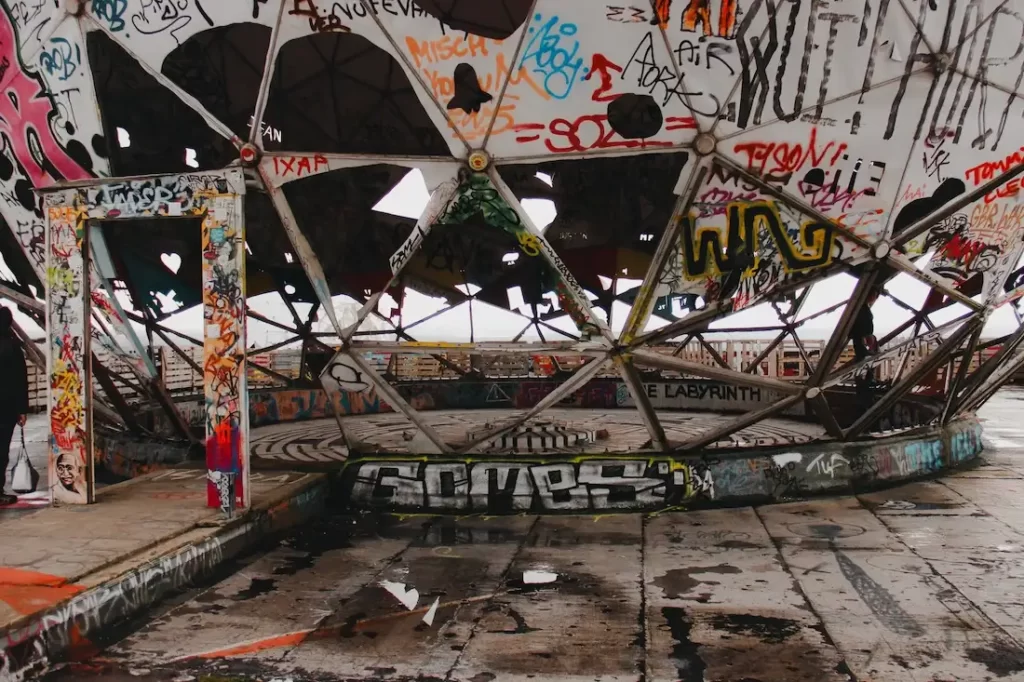

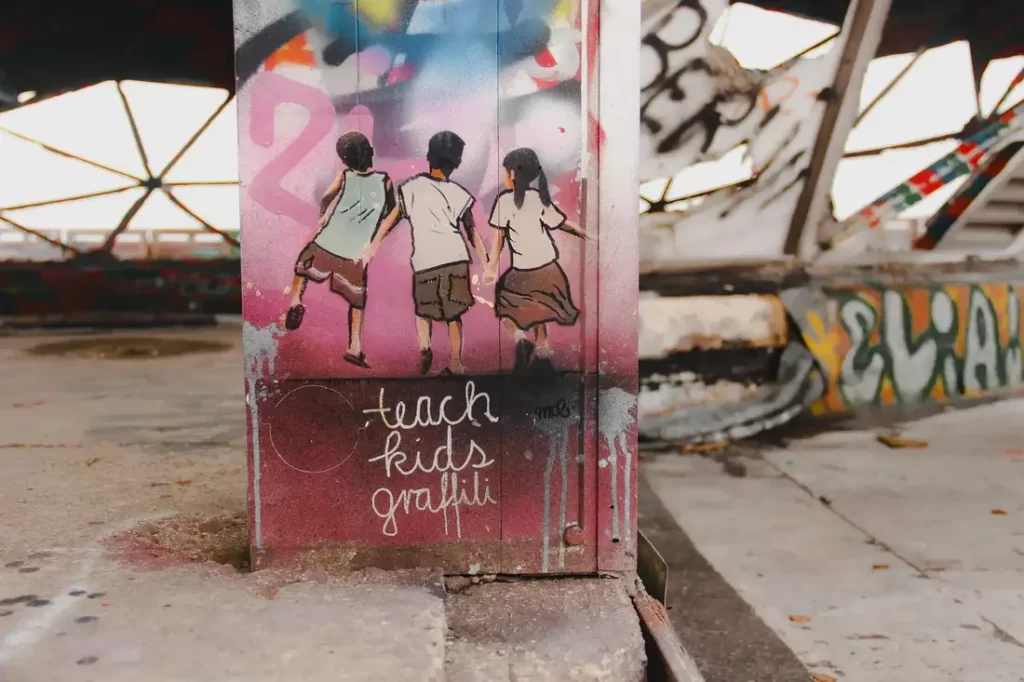
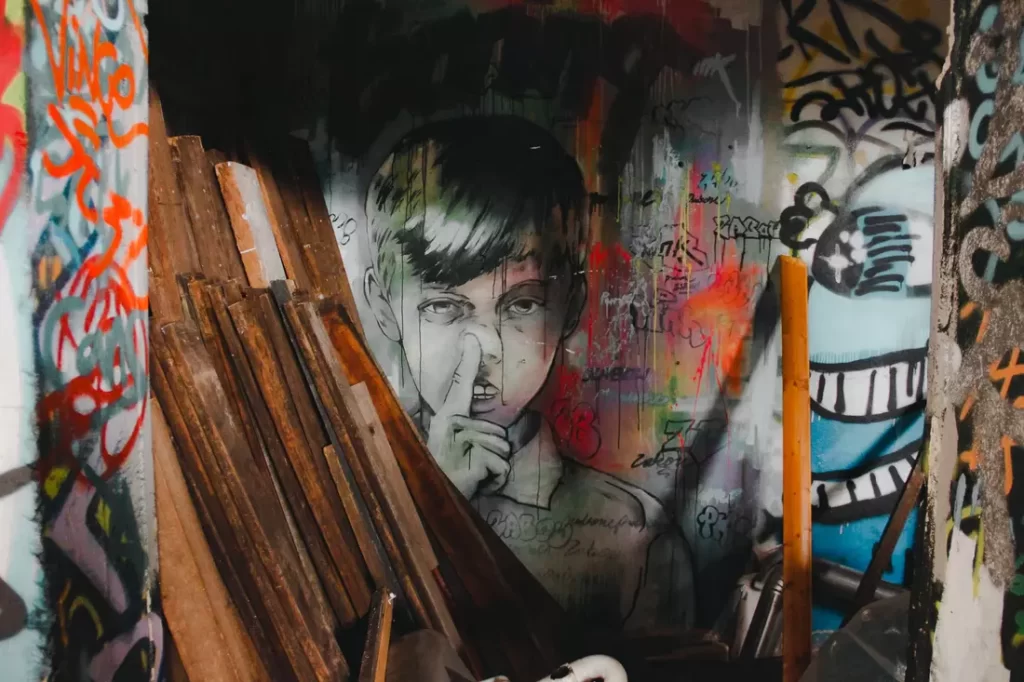
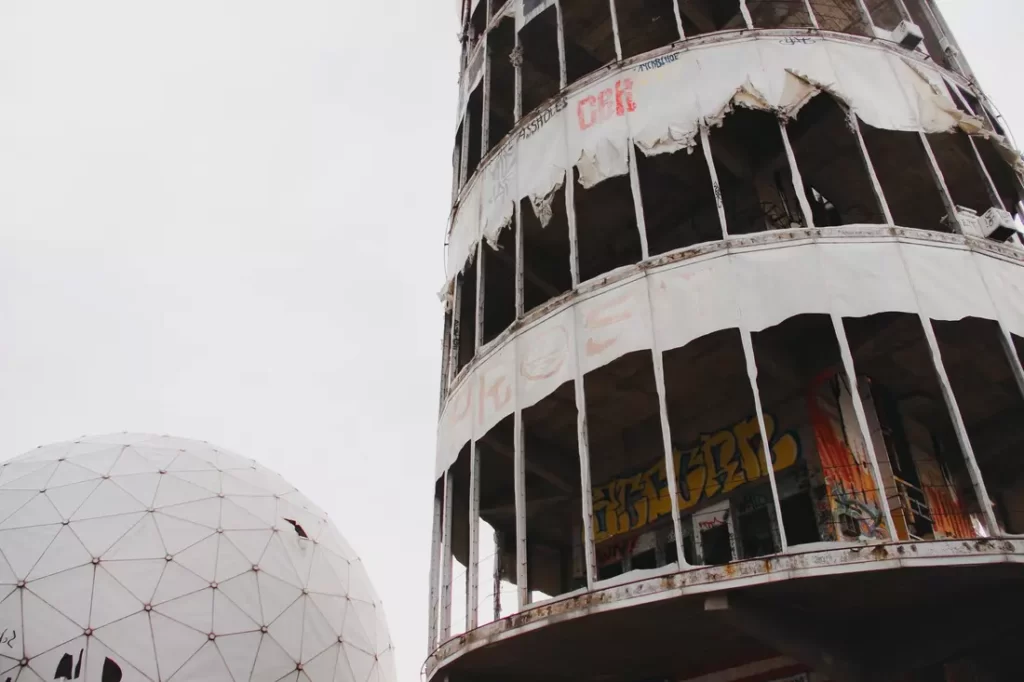
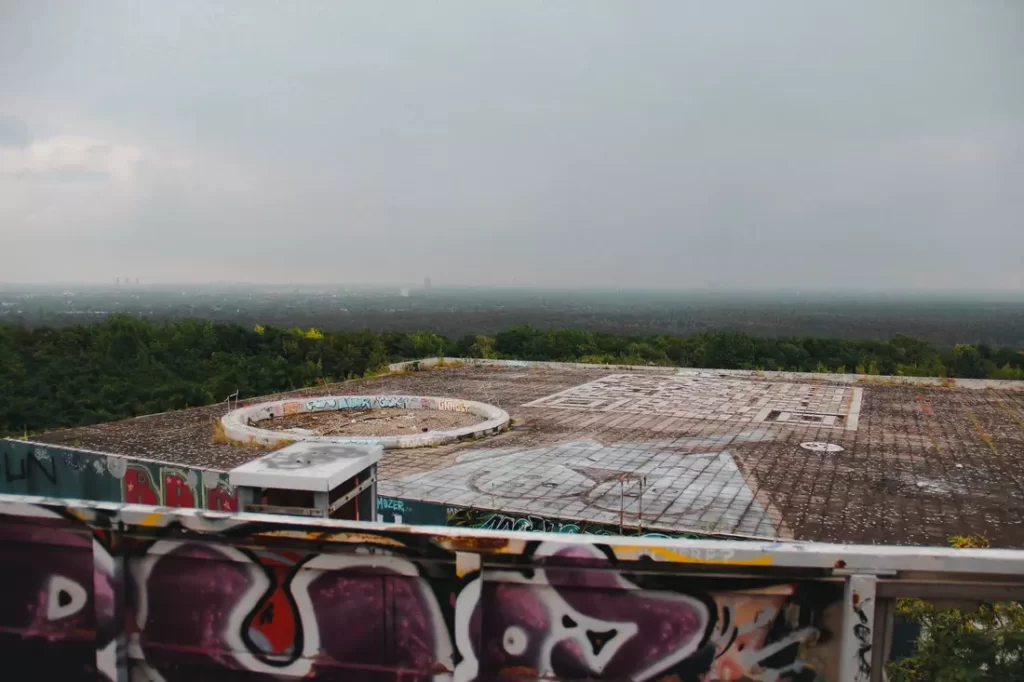
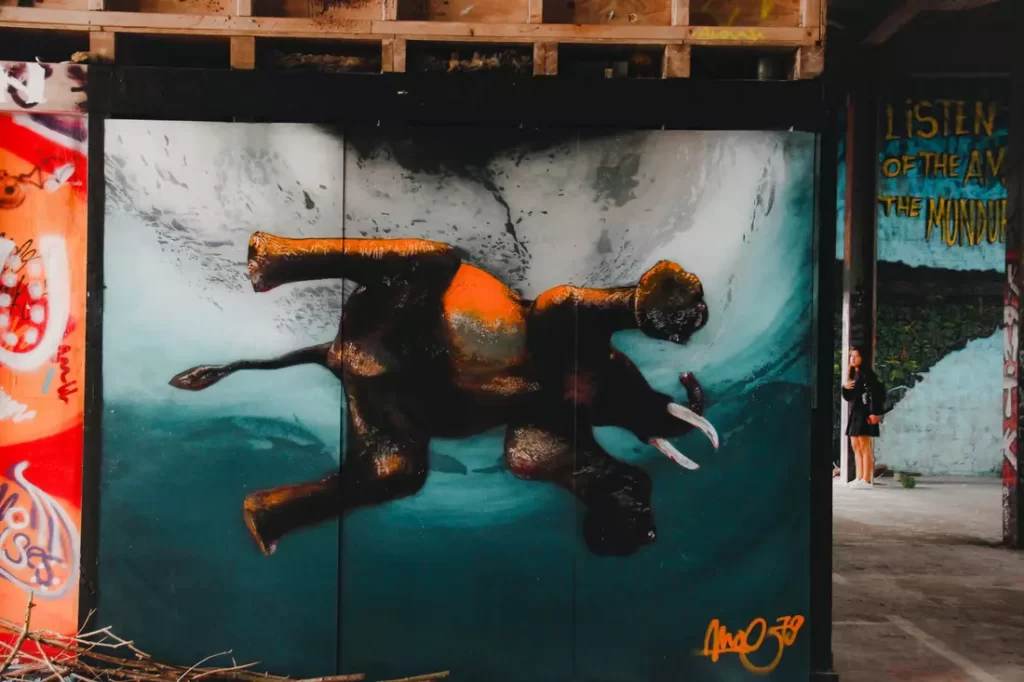
Suggested Read:
• Best Unusual and Alternative Museums in Berlin
• Best lakes to swim in Berlin and enjoy the Summer
Teufelsberg – How to Get There
Take the S-Bahn lines S9 or S75 and get off at Heerstraße, or take the S1 to Grunewald. From there, it’s a 20 to 30-minute walk to the entrance via Dragonfly Road. The entrance fee is 8 euros. You can buy it in advance here.
Bring sandwiches and drinks with you.
Suggested Read: Mauerpark: The Best Flea Market in Berlin
Guided Tours of Teufelsberg
If you’re looking for a more immersive experience, joining a group tour to Teufelsberg is an excellent option. Group tours offer a more in-depth exploration of the area and provide a better understanding of its historical significance.
You’ll get to learn about the construction of the hill and its purpose during the Cold War, as well as the artists who have transformed the abandoned US listening station into a unique art installation.
During the group tour, you’ll get to see the various artworks on display and explore the abandoned facilities, including the radar domes and the listening station. You’ll also get to climb to the top of the hill and enjoy breathtaking views of Berlin’s skyline.
Overall, a group tour to Teufelsberg is a fantastic way to experience the history and art of this fascinating location.
🕶️ The tour is available here.
How to Prepare for Your Visit to Teufelsberg
1. Dress Comfortably: Choose comfortable shoes – you’ll be doing a fair bit of walking and exploring. Think sturdy sneakers or even hiking boots. Also, Berlin’s weather can be a bit moody, so layering is key. A jacket or sweater that you can easily put on or take off will save the day.
2. Pack Your Adventure Essentials:
- Water bottle: Stay hydrated, my friends.
- Snacks: Exploring is hungry work! Pack some portable munchies.
- Camera: You’re going to want to capture the incredible art and views.
- Binoculars: For those stunning Berlin skyline gazing moments.
- Portable Charger: Keep your devices juiced up for all the photo ops.
3. Brush Up on Your History: A little pre-visit homework never hurt. Reading up on Teufelsberg’s history will make your visit more meaningful. You’ll stand on that hill knowing all the intriguing tales it holds.
4. Cash is King: While we live in a digital age, having some cash on hand is wise. Whether it’s for the entrance fee or a snack from a local vendor, it’s good to be prepared.
5. Plan Your Route: Teufelsberg isn’t exactly in the heart of Berlin, so planning your journey is crucial. Whether you’re taking public transport or driving, check out the best routes and parking options beforehand.
Explore the city with the Berlin Welcome Card
The Berlin Welcome Card is your budget-friendly buddy, offering a treasure trove of discounts at over 200 attractions. Museums, galleries, tours, and even some restaurants. Learn more!
This is your all-access pass to the city’s endless attractions, tailored to your travel needs and packed with perks.
Unlimited Travel Across the City: The Berlin Welcome Card is your passport to unlimited travel. It covers all public transportation in the city, including buses, trams, U-Bahn (subway), and S-Bahn (city rail). Say goodbye to the hassle of buying individual tickets and hello to seamless city exploration!
Choose Your Perfect Match: The card comes in several options, ensuring there’s a perfect fit for every type of traveler:
- 48-hour Card: Ideal for short stays, diving into the heart of Berlin.
- 72-hour Card: Perfect for a long weekend, balancing sightseeing with leisure.
- 4-6 day Cards: These are great for an extended exploration, allowing you to soak in Berlin at your own pace.
Discounts and Deals: The card is a treasure chest of savings, offering discounts at over 200 attractions, including museums, tours, and select restaurants. This means more experiences for less!
Pricing: The cost of the Berlin Welcome Card varies based on duration and coverage area:
- 48-hour AB Zone: €23 (ideal for central Berlin).
- 48-hour ABC Zone: €28 (includes travel to Potsdam and Berlin Schönefeld Airport).
- Prices increase incrementally for the 72-hour and 4-6 day options.
Additional Perks: Some Berlin Welcome Card variants include special additions like free entry to the Berlin TV Tower or a city river cruise.
Family-Friendly: Traveling with family? The card covers children up to a certain age for free, making it a great option for family trips.
Free Guidebook: Each card comes with a guidebook brimming with insider tips and information to help you uncover Berlin’s hidden gems.
Editor of Yes, Summer! I am a Brazilian journalist, writer, and digital nomad. I have been traveling the world, telling stories, and tasting local beers since 2010. I am the co-founder of 360meridianos, a reference in travel writing in Brazil, and author of the newsletter Migraciones. On social media, I'm always reachable at @natybecattini.
